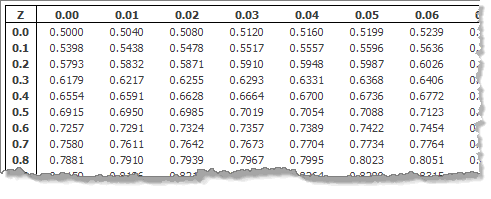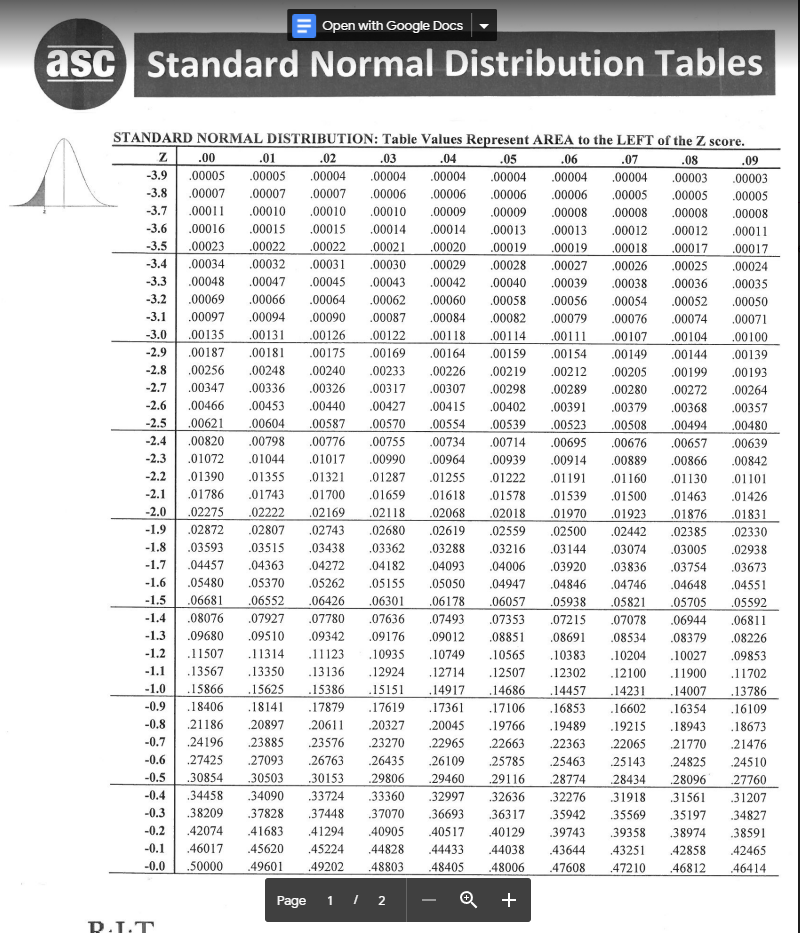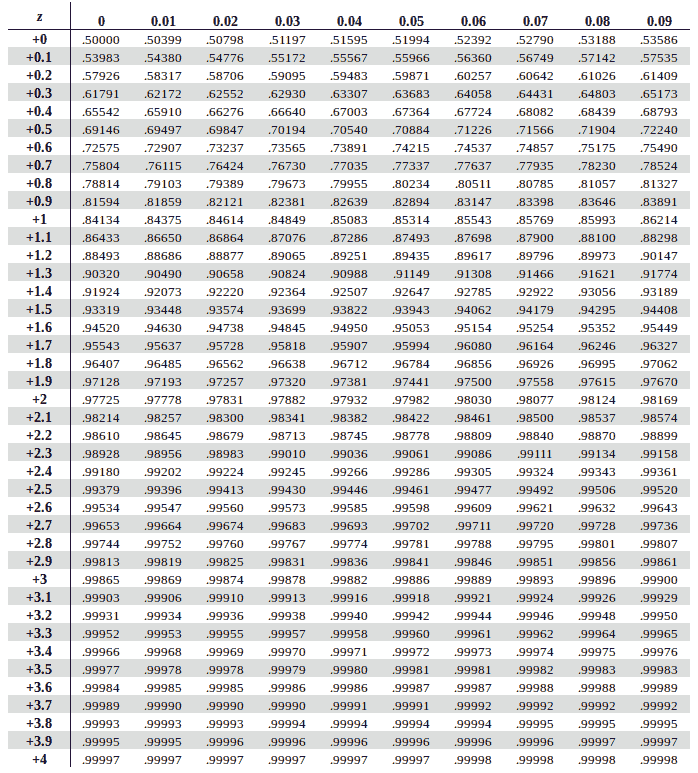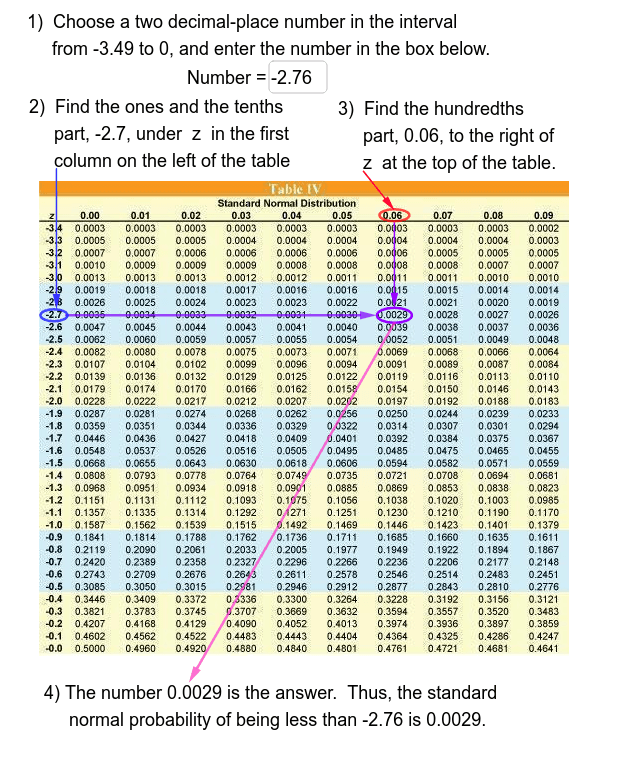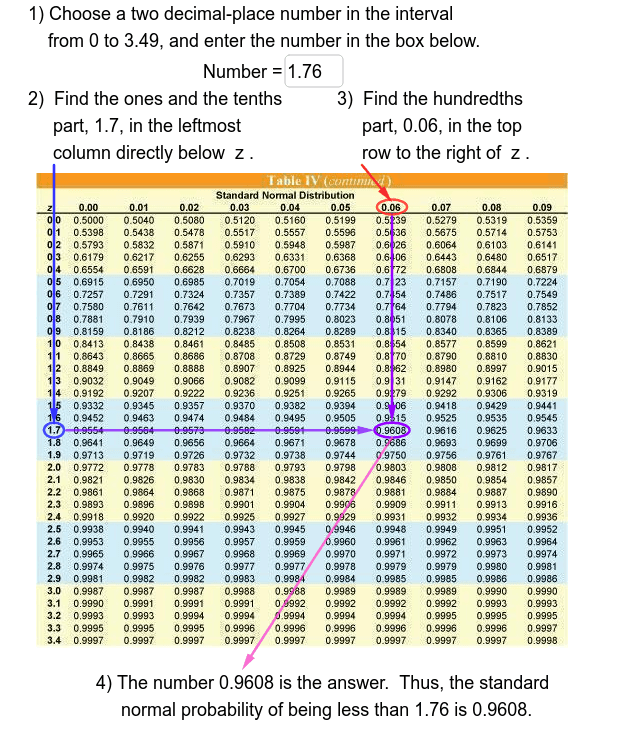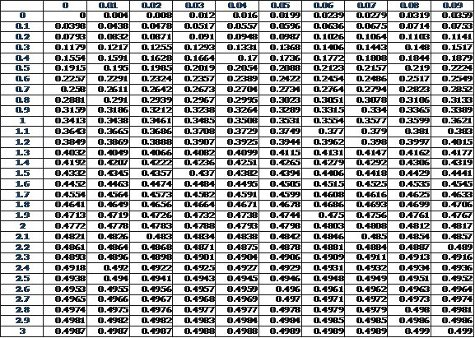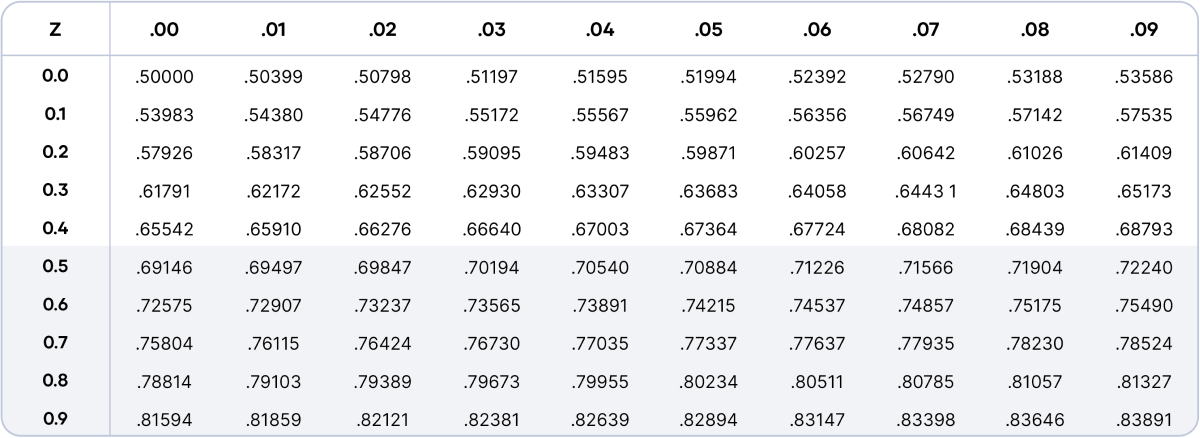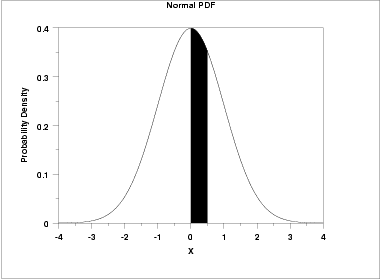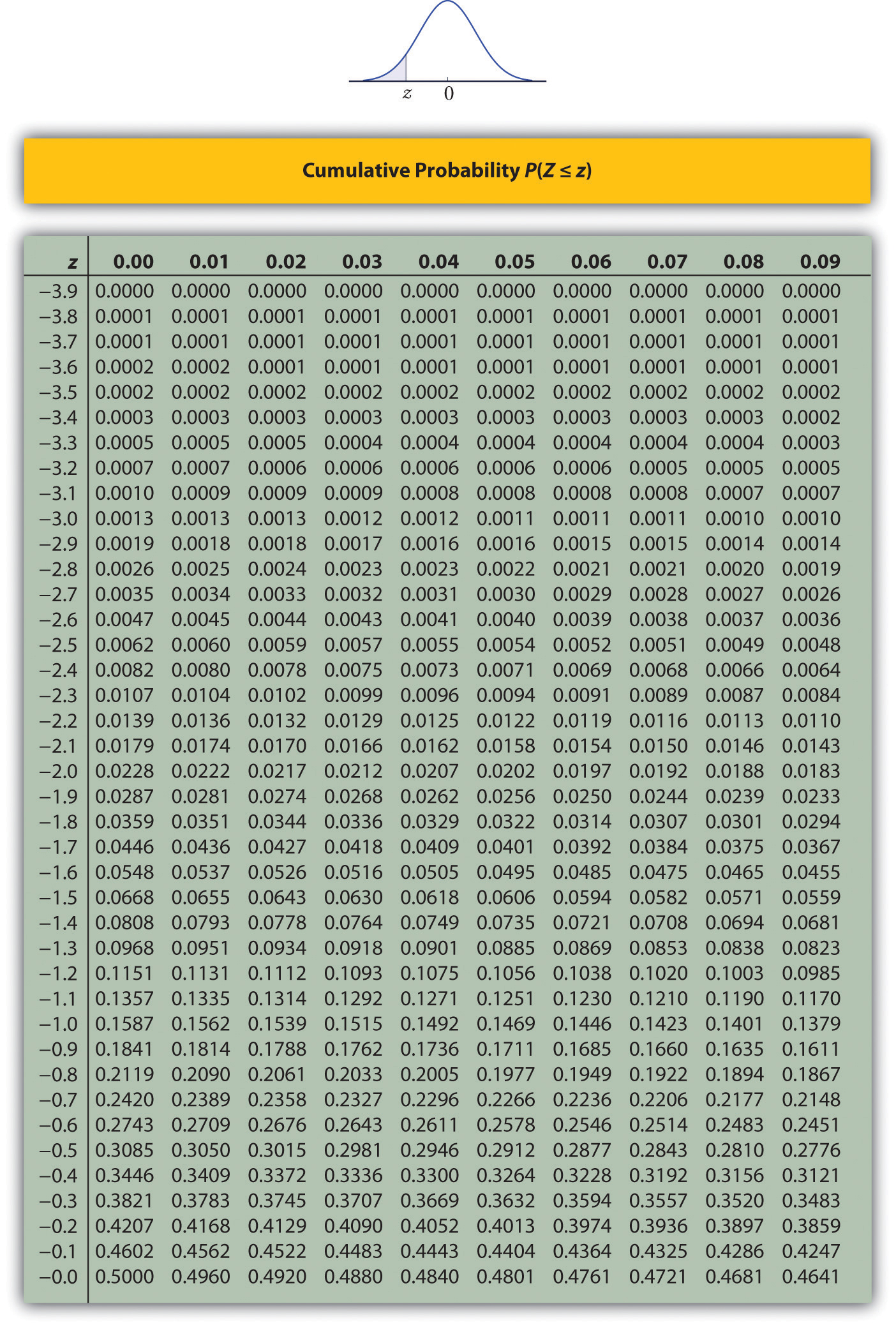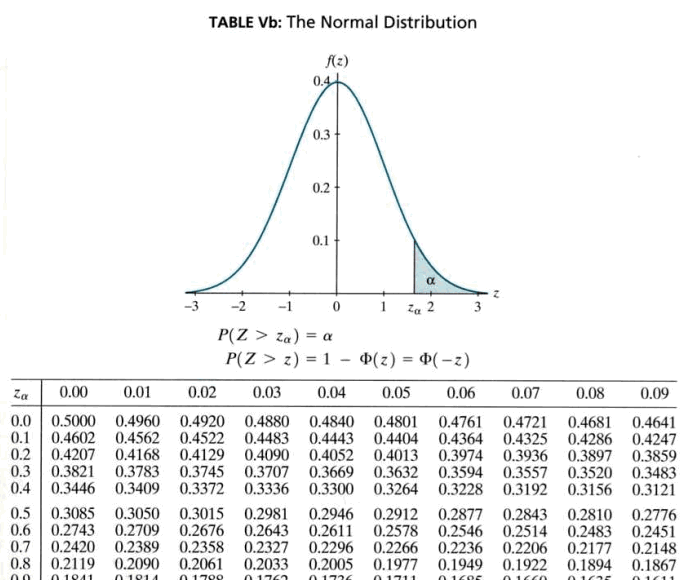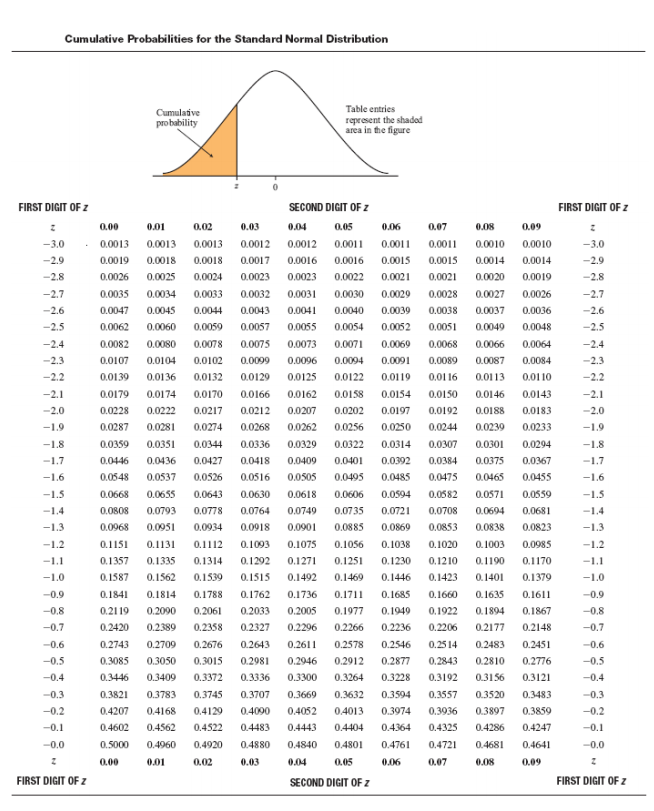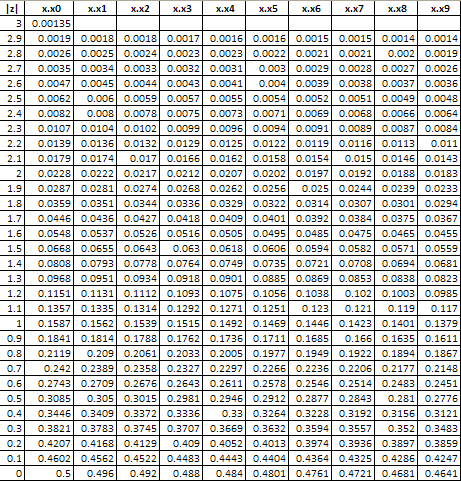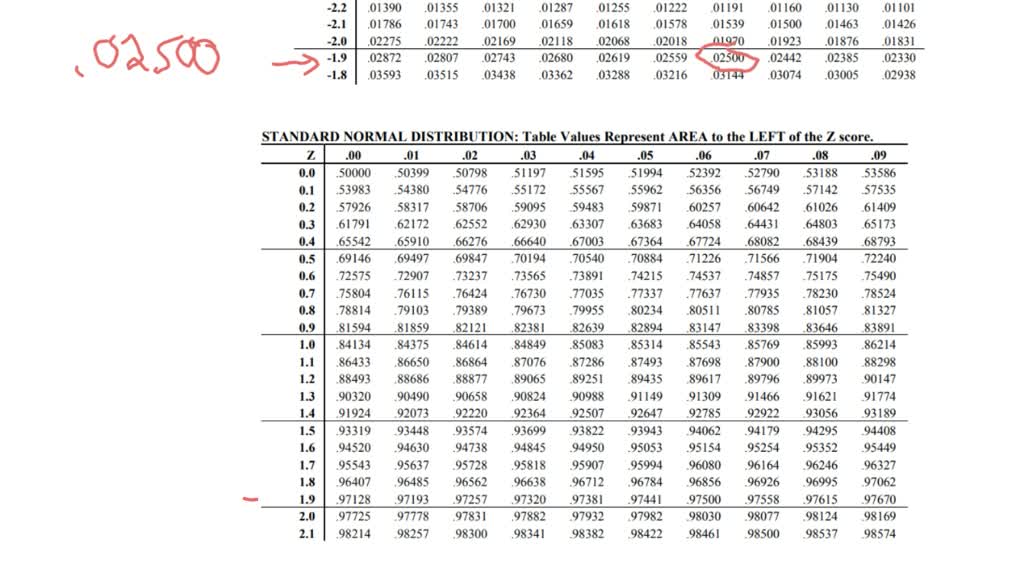
SOLVED: Use your z-score table. What percentage of scores (i.e., of a Gaussian distribution) is between -1.96 and +1.96 z-scores? You don't have to put the % sign.
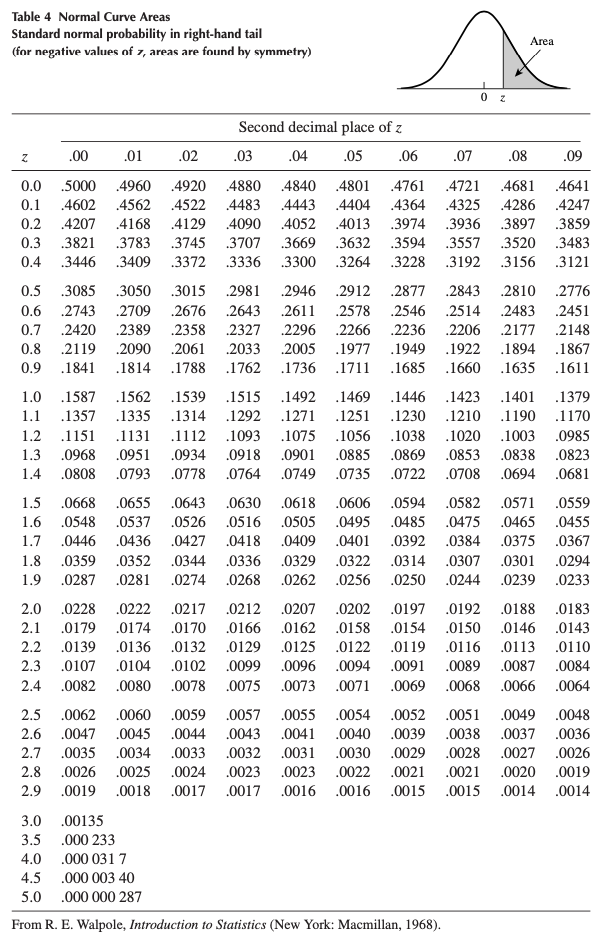
Do my data follow a normal distribution? A note on the most widely used distribution and how to test for normality in R - Stats and R

Standard Normal Distribution Table.pdf - STANDARD NORMAL TABLE 2 Entries in the table give the area under the curve between the mean and zstandard | Course Hero

Standard Normal Distribution | Grade 12 Math | Ontario 12 Mathematics of Data Management (MDM4U) | Mathspace

